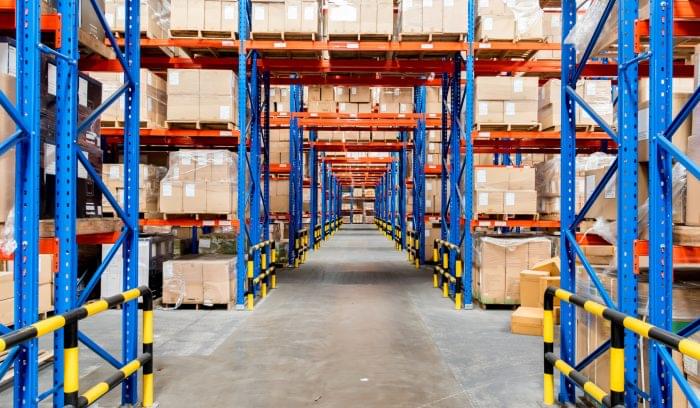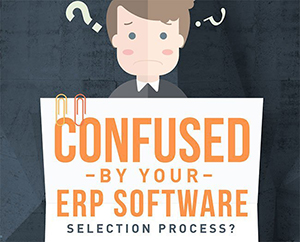Solving the multi-warehouse management puzzle with SAP Business One
This post reveals how warehouse and operations managers can leverage SAP Business One to solve some of the key challenges presented by multi-warehouse environments.
For mid-market distributors, manufacturers and retailers with a footprint that extends across multiple warehouses in locations across Australia or around the globe, success or failure will rest substantially on operational decisions made on the frontline.
Chaotic receiving processes, poor communication, aimless pickers, double-handling of stock, inaccurate stock counts: these issues affect your fulfilment efforts. Given that happy customers are those that get what they want, quickly—if you can’t deliver, your bottom line will suffer.
Your career and the future of your organisation relies on integrated business systems with the depth of functionality required to optimise the management of a network of warehouses. SAP Business One is an Enterprise Resource Planning (ERP) solution with a true command over multi-site inventory and distribution.
Tech know-how to operate at your best across every warehouse

Harnessing the right technology will be critical for operational leaders looking to gain control at the systems level within a multi-warehouse business while also taking care of the minutiae of everyday interactions, both internally and with customers.
Writing for Harvard Business Review, supply chain industry experts—including former Amazon VP of European operations Allan Lyall—predict that technology will seriously disrupt traditional supply chains through the digitisation and automation of tasks.
Supply chain professionals need to move past repetitive, manual tasks, and step-up to design and manage information and material flows. Lyall and the other authors argue, “In the near term, supply chain analysts who can analyse data, structure and validate data sets, use digital tools and algorithms, and forecast effectively will be in high demand.”
Insights the analytical operational manager needs to excel
The supply chain of the future will no doubt be augmented by sensors, AI, robotics, machine learning and high levels of automation, and digital transformation is a winning strategy.
But there’s nothing virtual about the stock sitting on your warehouse shelves right now. It’s taking up space that is often hard to come by and represents a large cost to your business. The digital systems you put in place must help you cleverly and carefully manage physical inventory across different sites.
Here are some multi-warehouse scenarios facing companies where SAP Business One can help leaders make better decisions to improve operational efficiency and costs:
- Customer demand efficiency: There’s a reason you have different warehouses in specific locations. If you’re paying for premium space in the inner suburbs of Sydney it’s probably because you have more customers in the vicinity and therefore a high turnover of stock, compared to say, the warehouse you operate in Dubbo. SAP Business One has excellent Material Requirements Planning (MRP) functionality: you can define MRP parameters for each individual warehouse and be confident you have the correct levels of stock to service customers in that particular region.
- Optimising use of space: Use of space matters if you care about cost reduction and efficiency. Operationally, you may wish to separate out the purpose of different warehouses: for instance, to use one site to quarantine stock that’s on your books but unable to be sold. Or maybe you want to get more granular in how you allocate floor space in each warehouse: layout design is crucial, but so is visibility of that inventory in your system so that intra and inter-warehouse movement is apparent. SAP Business One helps you manage warehouse roles and bin locations with ease.
- Cost management: SAP Business One gives you a big picture view and accurate records—so you can trust stock counts and see at a glance how much money is tied up in inventory by location. But what you can also do is see the landed cost of every product: so you can see the differences and adjust strategies. For instance, due to differences in local transportation costs, the cost to your business in supplying a specific product could vary depending on whether that product is dispatched from your Melbourne warehouse or your Sydney warehouse. SAP Business One allows you to quickly determine the most economical approaches to fulfilment and configure your operations accordingly.
- Labour efficiency: Strong Bin management functionality within SAP Business One means pickers’ movements around each warehouse are deliberate—it even provides workers with the ideal route to maximise their time. Where a lot of organisations struggle is the step prior to this: the alignment between orders and inventory availability. Too often, distributors lack precise detail about whether stock is on hand to complete a pick, especially where stock may be stored in multiple warehouses, in-transit between them, on consignment, etc. The upshot is that your team’s time is wasted. SAP Business One ensures warehouse managers can review customer orders, production orders, transfer requests, inbound stock and other variables to determine what’s truly on hand, before they deploy people to fulfil orders.
[READ NOW – 5 Key priorities when choosing inventory management software]
A total solution for satisfied end customers
Keeping customers satisfied is a broad remit, and many of the responsibilities for doing so in a wholesale distribution company sit with the operations manager or warehouse manager.
Your capacity to control and optimise the workforce, infrastructure, inventory and procedures that lie at the heart of your operation—or on the warehouse floor—influence your business’ competitiveness in a marketplace where customers expect high quality at a low price.
With SAP Business One you can precisely manage products and stock turnover based on the unique operational requirements and costs of different sites.
You’d be hard pressed to find a team with more experience than Leverage Technologies in helping wholesale distributors undergo a digital transformation with SAP Business One. Get a free demo, give us a call on 1300 045 046 or email info@leveragetech.com.au to learn more.










Leave A Comment